Update: the Batis 2/25mm review is now online!
Zeiss caused quite a stir when it announced its second family of lenses designed exclusively for the Sony E-mount system. Unlike the Loxia lenses (see our review here) that are manual focus, the Zeiss Batis 85mm offers everything you would expect from a modern lens: autofocus, optical stabilisation and the world’s first digital OLED screen that replaces the classic distance scale marked on the lens.
Even more interesting is that, unlike the Loxia lenses, the new Batis family comes with two focal lengths that were missing from the E-mount line-up – 25mm and 85mm. The 85mm f/1.8 is certainly the most anticipated lens of the two because it is the first native portrait lens for the system. It is expensive and doesn’t have an f/1.4 aperture but it has been exclusively designed, produced and distributed by Zeiss.
Is the Zeiss Batis 85mm worth the money? Let’s find out!

Click to see the full res image.

Zeiss Batis 85mm f/1.8 Specs
- Focal length: 85mm
- Maximum aperture: 1.8
- Minimum aperture: 22
- Angle of view: 29°
- Closest focusing distance: 80cm
- Lens configuration: 11 elements / 8 groups
- Special elements: 2 ED elements, 1 UED element
- Lens surface coating: Yes (T* Coating)
- Maximum image magnification: 1/7.9
- Optical Image Stabilizer: Yes
- Dimensions: φ78mm Ø, 105 mm
- Filter diamater: 67mm
- Weight: 475g
[toc heading_levels=”3″]
Gear used for this review:
- Sony A7r
- Sony A7s
- Sony a6000
Below you can check out our hands-on video review of the two Batis lenses where we also show you exactly how the OLED screen works and how to select the various options.
Design and ease of use
The lens’ design stays faithful to the style introduced on the Touit (for Sony and Fujifilm APS-C mounts) and Otus families. It is simple and elegant with a dark all-metal build and a plastic lens hood that fits the form of the lens perfectly. The lens is splash and dust proof. It is not too heavy (475g) and remains balanced on the A7 body. It is also a good fit for the a6000. It is certainly not a small lens and I personally feel it represents the limit when it comes to primes for the Sony full-frame system. Anything bigger becomes less portable and diminishes the advantage of a smaller system.
Did you know that…?
Following on from the Touit, Loxia and Otus families, the Batis series is the fourth to be named after a bird species.
There aren’t any buttons or switches on the lens. The only physical control is the focusing ring that is covered with rubber. Like the Touit lenses, the rubber has a pleasant feel and can be used in very cold temperatures, as the rubber isn’t cold to the touch. On the flip side, it attracts more dust. The focus ring is of course “fly-by-wire” but it is smooth and precise to operate.
What would have been nice is an aperture ring. It is a feature photographers would have definitely appreciated.
One of the most important features is the OLED screen. As I said at the beginning, the Batis lenses are the first full-frame lenses to incorporate such technology. How does it work? Well, by default, when you work in autofocus mode, the screen remains deactivated. It is only when you turn on the camera that the Zeiss name briefly appears.
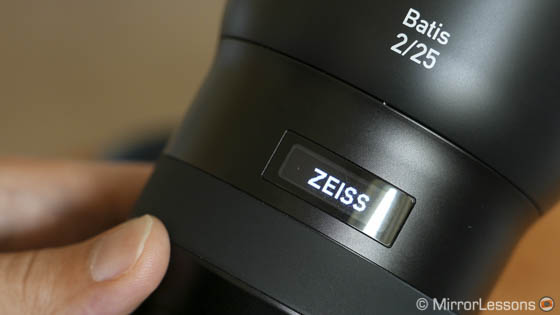
When you switch to manual focus from the camera’s quick menu or function button, the screen turns on and gives you various information. At the centre, the biggest number gives you the precise distance at which you are focusing. The smaller numbers on the left and right represent your depth of field, which varies according to your focus distance and chosen aperture. The more you close the aperture, the deeper your depth of field will be. If you are focusing at the minimum focus distance, the depth of field is only shown at the right side of the screen and is expressed in decimals.
Is the OLED screen useful? Well, to be honest I never used it on this particular lens. I used it much more on the 25mm because, being a wide angle lens, the hyperfocal scale is more useful for street or astro photography. In low light, it is certainly a nice thing to have as the information displayed is clear and bright. In sunlight however, the numbers are more difficult to read.
Quick Tip: switching from meters to feet, turning the OLED screen ON/OFF
By default, the distance scale is expressed in metres. If you want to switch to feet, you have to rotate the ring until you reach the minimum focus distance (an arrow on the left will appear once you are at the shortest distance). Then keep rotating in the same direction for 360° and the scale will change from metres to feet. Repeat the same process to switch back to metres.
The OLED screen can be activated even in autofocus mode or turned off in manual focus mode. The process is the same as the metres/feet operation but you turn the ring in the opposite direction. So once you reach infinity (an arrow on the right will appear), keep turning the lens for 360° and an ON/OFF option will appear. Keep turning in the same direction to select ON (remains activated no matter which focus mode you selected), MF (activates only when manual focusing) or OFF (remains deactivated in both focusing modes). To validate, simply turn in the opposite direction.
Through the lens: image quality
After two weeks of use, I have come to really like the Zeiss Batis 85mm. Out of all the mirrorless options, it is becoming one of my favourite lenses for portraiture in addition to the Fujifilm X-T1/56mm combo. I really like the character the 85mm delivers and I think that Zeiss enthusiasts will surely appreciate it. It gives a very natural rendition and I never really missed a f/1.4 aperture. I am not saying this to justify the f/1.8 aperture – I simply feel that the lens delivers very high performance at f/1.8, so f/1.4 becomes an extra you don’t really need.
At f/1.8, the lens deliver excellent sharpness. This is where the bokeh is at its smoothest and creamiest and I really like the overall look the lens delivers at its fastest aperture. There is some vignetting but it can easily be removed with Lightroom or another Raw editing software.

Click to open the full res image.

Click to open the full res image

At f/2.8, the vignetting disappears almost completely but the lens retains its character with a bokeh that remains pleasant even at f/4. The transition between the in-focus and out-of-focus areas is smooth and looks very nice. Sharpness of course increases even more. You probably can’t get better than this unless you look at the more expensive Otus lens.

Click to open the full res image.

Click to open the full res image.

The lens performs well in backlit situations as well. I didn’t find any relevant trace of chromatic aberration, not even at f/1.8. That fast aperture is also good for isolating your subject from the background even when he or she is at a distance from the camera.


I also tried the lens on the a6000. It gives you an equivalent field of view of 127.5mm which is still excellent for portraits. For those who own both full-frame and APS-C cameras from Sony, this lens definitely becomes more versatile.

While not its primary purpose, the lens also delivers great sharpness for landscapes and other purposes, not only at the centre but also in the corners.


If I wanted to be really picky, I could point out some very slight pincushion distortion, such as in the image below. But frankly, this is not something to worry about and I easily fixed it in Lightroom.
Update: the latest Lightroom (2015.1.1) and Adobe Camera Raw (9.1.1) releases include the Batis profiles. You can get rid of vignetting and pincushion distortion with one click.
Autofocus and performance
I haven’t found anything to complain about when it comes to autofocus. It is fast, smooth and silent. The performance however can vary depending on the camera. For portrait sessions, I used the smallest AF point to precisely focus on the eyes of my subjects. On the A7r, I experienced a lot of back and forth movement when using that specific AF setting. It behaved better on the A7s and a6000. During my visit to Owsestry for the food market, I took several portraits of the vendors while they were working. I had to take the shot quickly since there were lots of customers to be served so I choose the largest AF point instead and took two consecutive shots. Often the first one would be slightly blurry while the second one would be perfectly sharp. This happened on both the A7r and A7s.



While not designed primarily for action either, Heather also used the Batis 85mm with the a6000 in Continuous AF mode for some sports photography and the lens performed really well.


The 85mm also includes optical stabilisation (you turn it on or off via the Steadyshot submenu in the camera). It delivers good performance and can facilitate shooting at 1/50 or even 1/25s. For the various portraits I shot, I never used a shutter speed slower than 1/50s. For review purposes, I tested how far could I go and I managed to take sharp images at shutter speeds as slow as 1/10s with the A7r and the A7s.
The lens is designed primarily for stills but there is nothing to stop you from using it for motion images. The autofocus is less effective but this is partly due to the limited capabilities of Sony cameras in Continuous AF mode for video.
Hands-On Video
Our review of the Batis 25mm is now online. You can also check out our hands-on video review about the two lenses below.
Conclusion
Giving you advice about the Zeiss Batis 85mm is quite easy: for now, it is the only native portrait lens for the Sony full-frame system that has autofocus and optical stabilisation. It also happens to be an excellent performer. If you also own a Sony APS-C camera such as the a6000, you could find it useful on both systems. The optical quality is what you’d expect: excellent sharpness, beautiful bokeh, and a fast and silent autofocus mechanism.
Perhaps what we can argue about is the price. At more than $1000, it is far more expensive than the equivalent lenses for DSLR systems. 85mm f/1.8 is usually the affordable portrait lens option. The Canon version is around $400 while the Nikon is slightly more expensive. We can talk about the fact that it is made and distributed by Zeiss or that the lens might perform better than other 85mm lenses but it doesn’t eliminate the fact that it is a hefty investment.
One thing I am sure of is that sooner or later we will see an 85mm f/1.4 pop up on the lens road map. Whether it be designed by Zeiss or Sony, the only way to not kill the Batis sales is to make it even more expensive. The 35mm f/1.4 costs more than $1500 for example and that might be a ballpark range of what we should expect from a future E-mount 85mm f/1.4 lens.
 What I like about the Zeiss Batis 85mm f/1.8:
What I like about the Zeiss Batis 85mm f/1.8:
- Great character
- Delivers excellent sharpness and beautiful bokeh
- Fast and silent autofocus motor
- Is of great use on both full-frame and APS-C cameras
 What I don’t like about the Zeiss Batis 85mm f/1.8:
What I don’t like about the Zeiss Batis 85mm f/1.8:
- Some vignetting at f/1.8
- I never took advantage of the OLED screen with this lens (not really a negative but worth mentioning)
- For an 85mm 1.8, it is expensive
You can check out more full res images here. Also don’t forget to read the Batis 25mm review!
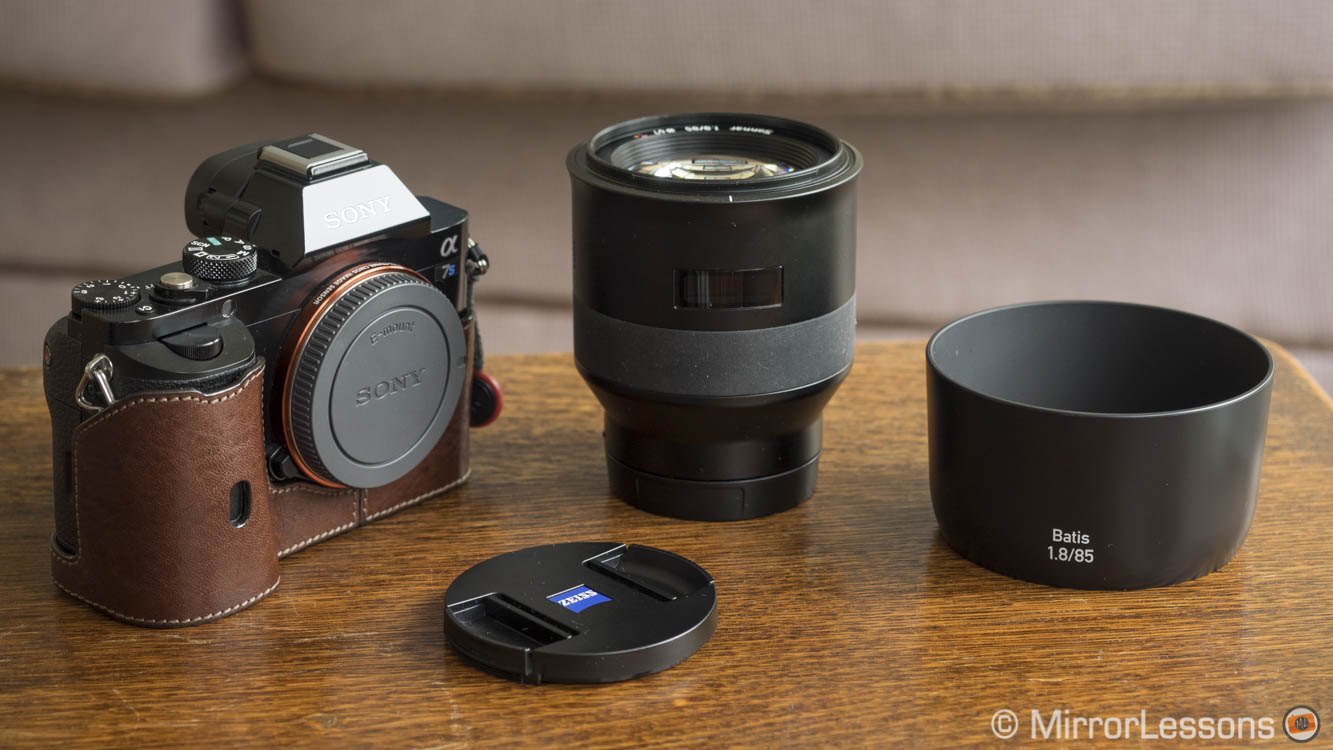
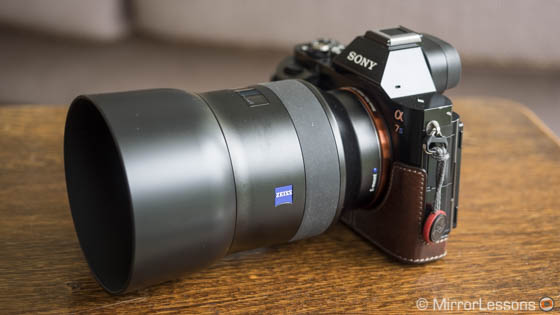
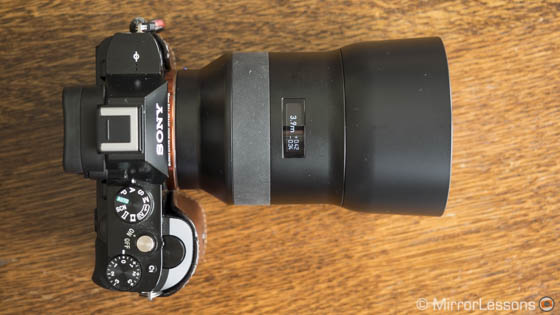
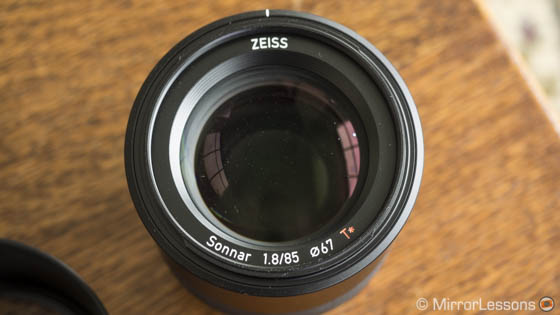
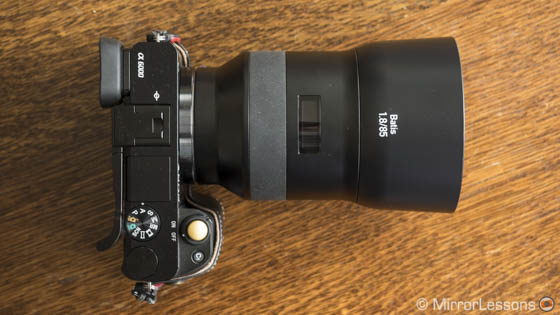
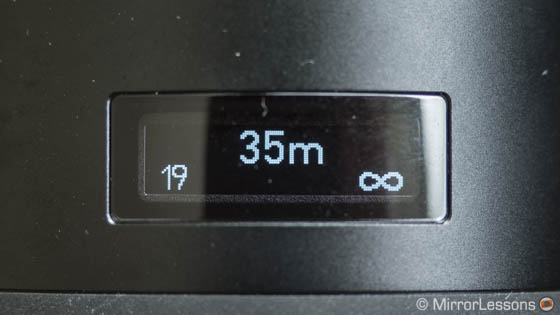
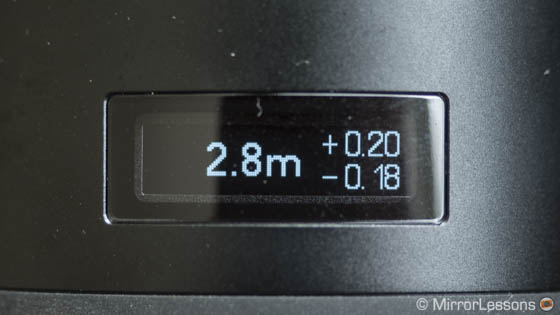
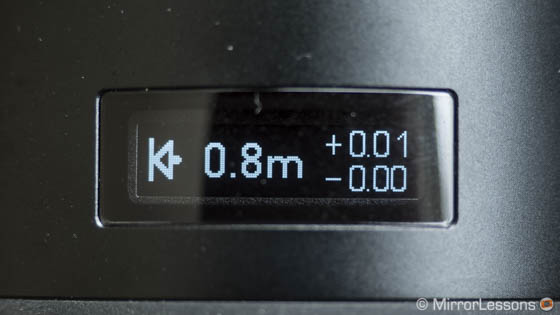
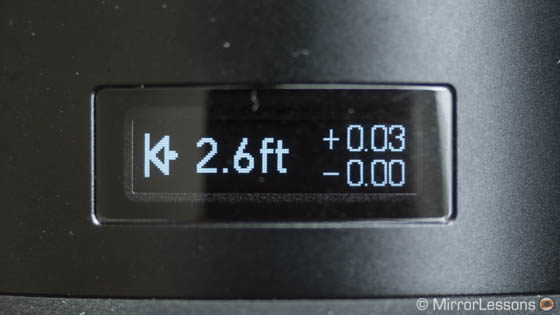




Not only that but those lenses like the ef 85mm 1.8 are not sharp wide open by any stretch of imagination so I consider those “fake” fast lenses because in my book a lens has to be sharp at its max aperture to deserve its rating. The Batis starts already super sharp from 1.8 so yes, expensive but the sharpens and rendering are worth it.
You’re welcome! Glad to be of help!
I recently purchased a Sony A7ii camera after shooting Nikon for many years and have been looking at options for prime lenses. Thanks for the very informative and helpful video on the Batis lenses. The information you gave on how to change the distance scale from meters to feet and how to activate and deactivate the oled was especially appreciated. Thank you
What kind of lenses do you own for each system? It could be a good idea to use one for portraits and the other for another genre for example. Or you can go for the cheapest one (Batis).
Thanks for the great review but I think I’ll stick with my µ43s’ Nocticron. Sony makes great cameras but I’m already invested into µ43s’ system (EM1). Please excuse a personal comment, It was nice to see Heather give us a big smile in one of the portraits. Most of the time she uses her enigmatic ‘Mona Lisa’ smile which is still great!
Bobby
I have both systems and can only afford one of them at the moment.
The Nocticron is the best portrait lens you can find for m4/3 but also the most expensive in the system. It’s difficult to compare them because they are designed for different system. With the Batis you will obviously get more shallow depth of field but the Nocticron rendering is great. What are you asking about these two lenses specifically?
I read most of this:) So my question is, how would you say this stacks up to the 42.5 noctricron.
Thank you for your reply, the samples of the 85mm batis on the A6000 look really good to me, great review and thanks for including the A6000 in the review, its a shame that its so expensive and hard to get hold of at the moment, i already have the zeiss 16-70mm which I love so having a 85mm and its F1.8 for portraits would be great, thanks for helping me decide on what to do 🙂
Thanks 135mm is what im after for portraits plus F1.8
The Batis 85 can do very well on the a6000 is the crop factor is not a problem for you.
You can see how the Batis 85mm performs on the a6000 in our comparison here:
https://www.mirrorlessons.com/2015/07/13/portraits-with-sony-e-mount-primes-zeiss-batis-85mm-f1-8-vs-90mm-macro-vs-55mm-f1-8/
It wouldn’t be an 85 on a APS-C sensor, I’m sure you realize it would behave more like a 135 mm or so. That’s just one factor. It maybe that the Batis may out resolve the A6000 sensor, not sure. Look at DOXmark website and see how the A6000 preforms with various lens compared to the A7R.
do you think that the 85mm batis would be a overkill for my A6000, its very expensive and im not sure if i will ever upgrade to a full frame A7ii, but I think the focal length for portraits would be useful
Thanks, glad it helped!
It’s a serious commitment for some of us to step-up to a quality lens. So I appreciate your no nonsense reviews. I feel very well informed after reading and hearing your non hyper-boil observations.
Hi Scott, those who say that no professional would shoot anything under 14 bit probably read too much DxO and don’t use their cameras a lot 🙂
Jokes aside, The A7rII raw files are 14 bit lossy compressed, so there is some loss of data. That being said, I used all the A7 cameras and I never found myself in a situation where I had to trash my images because they weren’t lossless or uncompressed RAWs. I also read many topics about this matter and often the images shown were 100 or 200% crops where you could notice some slight artefacts due to compression. Personally, I noticed a few times some slight loss of details on skin tone under certain lights when pixel peeping at 100%. But that didn’t stopped me to use the A7 for some portrait works so for me this matter is negligible. That being said, I think that Sony should give customers the option of choosing the RAW compression just like Canon and Nikon do. While the difference might not be that relevant for everyone (including me), it is a shame to not output the best of the best from such great sensors.
As for 3×5 feet prints, I admit I haven’t print that large with these cameras. Maybe the best thing is to wait until there is some RAW file available for download and print one to see the results. I am sure there won’t be any problem.
Mathieu – thanks for the lovely review. I will probably get the A7RII and the Batis 85 and the Sony Zeiss 35 1.4… that’s where I am now. But I’m struggling with an issue. I’ve borrowed a Nikon D810 (I was about to buy one but couldn’t get excited enough…then I saw the AR7 and got excited…either camera is a winner as far as I’m concerned) and the Nikon’s raw files are ~60-70 MGB and typically save to about 17-22 MGB. A friend has sent me files from his A7RII (with Leica lens) and he sent TIFF and ARW files that came in around 35-40 MGB and then saved to 16-22 MGB. I’ve read some snobbish comments on various sites that “no professional” would shoot anything that is not 14-bit raw files and that Sony is, indeed, 11+7 lossy. I find the “no professional” comment total bunk as there are several fistfuls of pros who have switched. I have also seen the results with my own eyes. But will this “42 MP” Sony also only save to 16-22 MGB range? If… if… I ever need to print something 3 x 5 feet, I’m wondering if Sony is playing games, if I’ll regret the purchase, if they are falsely claiming 14-bit raw? I did peep at a few photos of Heather via the SmugMug link and while I don’t know how large they were, looking at the original showed that it was a huge file. Sorry – probably too many questions here… Thanks kindly for the great reviews you guys do!
The focus speed of the Canon 85mm F/1.2L is brutally slow. The best way to sell a Sigma 85mm F/1.4 is to show the Canon one first. And the EF lenses focus very well on the new A7RII from what I saw. Off brand lenses however were a different story.
The 75mm is a great lens, it is enough 😉
Nice pictures by the way, thanks for sharing.
I really enjoy your reviews, you are nearly always looking at something I am also interested in. I need to be strong and resist the temptation to buy an A7 with the Batis, The M.Zuiko 45 / 75 need to be good enough for me ;). By the way: the 75mm was worth an article for me, too: http://ultraweit-verwinkelt.de/favorite-lens-m-zuiko-75mm/
Cheers,
Pierre
Leica lenses are very expensive. But then someone else would say that they can be compared because they are Leica. Prices are a simple fact. Then a 1.8 lens can be a great lens. The 55mm is one, this Batis is another one.
if you say this 1.8 is expensive
the Leica 35 f2 , 50 f2 is stupid expensive
fast aperture isn’t everything >>>> this is zeiss , Optic Quality can’t compare to the shitty canon 85 f1.8
>>> my FE Zeiss 55 f1.8 at 1.8 is farrrrrrrrrrrrr better than stupid soft Canon 50 f1.4 at 1.8
It’s tough because for about $1450-1600 one can get a used canon 85 1.2L 2 and even cheaper the first version. These 85 1.4 and 1.2 lenses give a special 3d look that 85 1.8 lenses generally do not achieve due to simple physics. Since canon Ef lenses supposed to autofocus just as fast on new Sony a7r2, we have more to choose from
To be perfectly honest, I think that this Batis lens is worth the money. And I wouldn’t be surprised if it is better than other 85mm 1.8 or even 1.4. But my argument is more general about the system and the price comparison with other systems. And I guess that a Batis 85mm 1.4 would have been larger and more expensive 🙂
The Nikon’s and the Canon’s of the world tend to make their f/1.8 lenses out of cheaper materials etc. so aren’t always comparable. I think a really well made f/1.8 or f/2 lens is allowed to be expensive, isn’t it? 😉